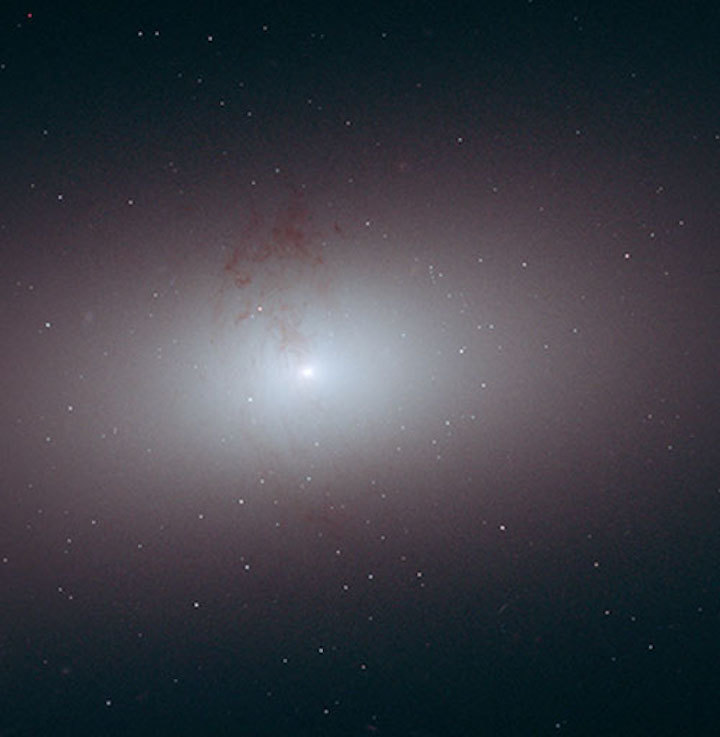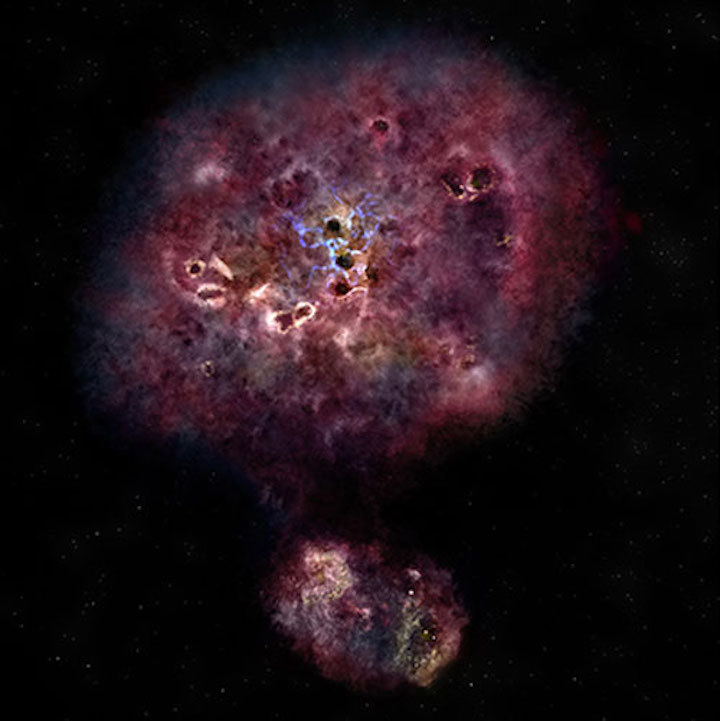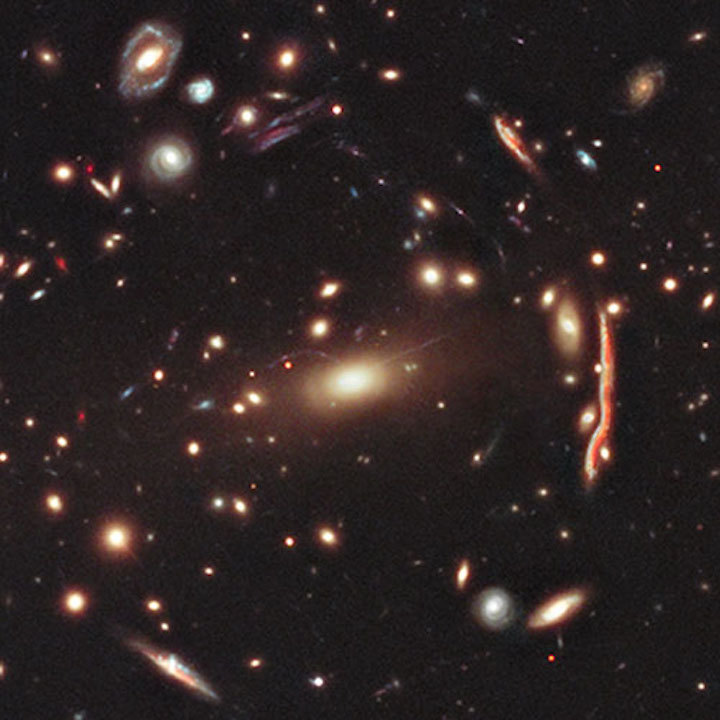21.02.2020
Astronomers have discovered a galaxy that formed five times as many stars as the Milky Way just 2 billion years after the Big Bang — but then quickly quelled any further starbirth.
Within the first several billion years of the universe, galaxies were growing like the newborns they were — turning gas into stars, sometimes at fantastic rates. But astronomers have discovered one massive galaxy that has apparently stopped forming stars altogether. The result could change how we think about galaxy evolution.

This image shows a nearby example of what the distant galaxy XMM-2599 might look like close-up: a massive galaxy that's not forming any new stars.
NASA / ESA / R. Foley
Ben Forrest (University of California, Riverside) and colleagues followed up on this “monster” galaxy, which was discovered in a larger survey, and published their results in the Astrophysical Journal Letters. The team took spectra using the MOSFIRE spectrograph on the Keck I telescope on Mauna Kea, Hawai‘i, to estimate the galaxy’s stellar mass, as well as its star formation history.
A Dead Monster Galaxy
The discovery of such a massive galaxy in the early universe was by itself a bit surprising. The galaxy, dubbed XMM-2599, has five times the Milky Way’s mass in stars. Monster galaxies like this one were rare in the early universe, even at a time when galaxies were going through growthspurts. Most galaxies simply hadn’t had time to turn out that many new stars.
But some galaxies worked overtime, at least for a little while. Chemical fingerprints in the galaxy’s spectrum indicate a starburst phase in this galaxy’s past. For several hundred million years around 1 billion years after the Big Bang, XMM-2599 was forging more than a thousand stars per year. (Compare this to the Milky Way, which currently only manages to produce about one or two stars every year.)

This artist's impression shows the kind of massive, dusty galaxy that XMM-2599 might have looked like 1 billion years after the Big Bang, when it was still forming stars.
NAO / AUI / NSF / B. Saxton
While rare, massive star-forming galaxies have been seen in both observations and simulations. What’s odd about XMM-2599, though, is that not only is it incredibly massive after such a short existence, but that it seems to have completely shut down its star factory.
There’s no ultraviolet emission from this galaxy. Nor is there emission from ionized oxygen that’s typically present in star-forming nebulae. The galaxy’s color also suggests that, while it recently underwent a starburst phase, it’s not currently producing any stars.
This is the first galaxy seen so early on in the universe with its star formation quenched. And current simulations can’t make anything like it. “Simulations do not produce galaxies this massive which are not forming stars this early in the universe,” Forrest explains.
So astronomers are left asking: What turned off star formation in this galaxy? Did the galaxy run out of gas . . . or is something preventing the gas from collapsing into new stars?

This elliptical galaxy at the center of a cluster represents one possible future for XMM-2599.
NASA / ESA / STSCI / M. Postman/Clash
The Way Forward
Forrest and his colleagues aren’t done with this galaxy just yet. It could be that dust hides newly forming stars, Forrest says, and radio observations from the Atacama Large Millimeter/submillimeter Array (ALMA) in Chile would help determine if that’s true. “Based on the data we have, it is unlikely that there is a large amount of this dust,” Forrest says, “but ALMA data can help us quantify this more precisely.”
The team also wants to obtain Hubble Space Telescope images of the galaxy, which will help determine its shape and size.
The additional observations could help astronomers pin down what their simulations are missing. Scientists are already well aware that a lot of factors can affect a galaxy’s growth and evolution, including winds and jets coming from the central supermassive black hole that lurks in most galaxies. Simulations incorporate a lot of these factors already, but clearly they’re still lacking something. Perhaps supermassive black holes start guzzling gas earlier on, or maybe they affect their host galaxies on a scale greater than currently thought.
Ultimately, Forrest wants to find more strange galaxies like XMM-2599. “If this is a single, very unusual object, then a set of odd circumstances may have generated the galaxy we observe,” he explains. “However, if it is part of a population, that is stronger evidence for the necessity of different physical explanations.”
Quelle: Sky&Telescope
